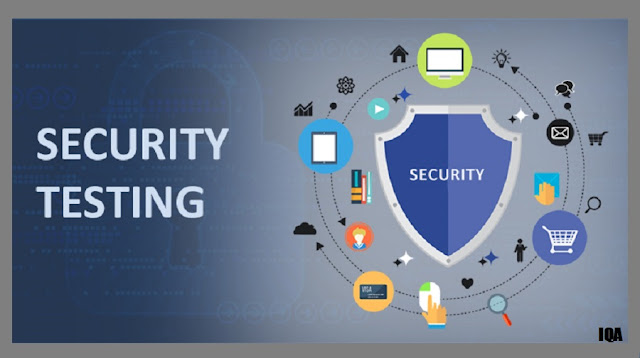The Importance of Security Testing in Software Development
 |
| Security Testing |
Security Vulnerabilities and Threats
Software security testing helps identify vulnerabilities and threats that could
be exploited by attackers. Any software, no matter how well designed or
developed, will have some level of security weaknesses or bugs. Threat actors
are continuously finding new ways to exploit systems. Regular security testing
ensures issues are found and addressed before they can be abused. Developers
may understand the intended functionality but testing helps validate there are
no unintended open doors.
Application Vulnerabilities
All applications have a risk of vulnerabilities from things like injection
flaws, broken authentication, sensitive data exposure, XML external entities,
and broken access control. Security
Testing scans for these problems through manual code reviews, automated
analysis tools, and simulated attacks. Even a small oversight could lead to
account compromise, data theft, or system access. Thorough testing helps close
holes and prevents them from becoming real world incidents that damage users
and brand reputation. Things continuously change so periodic testing confirms
any new vulnerabilities have not emerged from code or configuration changes.
Web Application Security
Many software deployments involve web applications that interface directly with
untrusted users over the public internet. The surface area for attacks is much
larger and techniques are more advanced for web apps. Testing ensures proper
input validation, output encoding, session management, access control rules,
and that no sensitive data flows happen over insecure channels. Web apps also
need to consider risks like cross-site scripting flaws, broken access control,
insecure direct object references, security misconfiguration, sensitive data
exposure, and more. Comprehensive security testing evaluates web apps against
the entire Open Web Application Security Project (OWASP) Top 10 list.
API and Services Security
Modern applications increasingly leverage application programming interfaces
(APIs) and microservices to share data and functionality across systems.
However, APIs present unique security concerns relative to traditional web
applications. Testing is important to validate tokens, keys, secrets are
properly handled and cannot be abused. Authentication and authorization
mechanisms need evaluating to prevent access by unauthorized parties. API
specifications must also be reviewed for any information leakage. With APIs
often targeted by red teams, testing finds weaknesses that could be leveraged
in API attacks before real attackers discover them.
ICS, SCADA and IoT Security
Critical infrastructure like power grids, water treatment, and manufacturing
depend on Industrial Control Systems (ICS), Supervisory Control and Data
Acquisition (SCADA) systems and Internet of Things (IoT) devices for monitoring
and automation. However, these operational technology systems may not have the
same security safeguards as traditional IT and can expose serious risks if
compromised. Security testing evaluates authentication, authorization, patching
capabilities, network segmentation, credential management and more to ensure
such systems would not fail under a cyber attack. Testing techniques must often
adjust to specialized protocols, embedded devices and real-time operational
needs.
Mobile Application Security
Users increasingly rely on mobile apps for everything from shopping to personal
finance to work communications. While app stores analyze software for malware,
penetration testing checks for issues beyond just malware. Testing evaluates
authentication, authorization, crypto usage, privacy controls, input
validation, API misuse and other attacks mobile apps might face. Due to
limitations of mobile platforms, testing additional validates data security
especially while the app is in use or if the device is lost or stolen. With
personal and organizational data now commonly on mobile devices, testing is
critical to avoid smartphone compromises.
Source Code Review
For many systems, conducting manual source code reviews remains an important
security testing technique. Experienced reviewers can identify issues like
cryptographic weaknesses, programming errors, logic flaws and insecure coding
practices that automated tools miss. New applications and major code changes
especially benefit from human analysis. Reviews validate compliance tointernal
and industry secure coding standards while finding language specific issues. By
testing early in development, reviews help shift security left and reduce
vulnerabilities before deployment.
Penetration Testing
Penetration testing most directly assesses the likelihood and impacts of a real
attack by simulating the activities and techniques used by threat actors.
Testers actively probe systems to compromise authentication, gain privileges,
extract sensitive data and disrupt availability. Penetration testing helps
validate the effectiveness of existing controls and the "battle
readiness" against professional adversaries. It identifies weaknesses in
external protections like firewalls and internal defenses around privileged
access, administrative panels and sensitive stored data. Organizations use
penetration testing to prepare for and reduce risks from advanced persistent
threats and insider attacks.
Compliance and Audit Readiness
Many frameworks and standards include requirements for regular security
testing. Organizations need evidence testing thoroughly evaluates controls
required by frameworks like NIST Cybersecurity, ISO 27001, PCI DSS and others.
Detailed test plans, reports and remediation tracking help demonstrate due
diligence for audits, reduce compliance risks and improve scores on security assessments.
Testing checks for issues that could lead to non-compliance findings from
auditors. Maintaining testing schedules, retesting remediated issues and
promptly addressing failures ensures readiness for compliance obligations and
external validation of security posture.
Incident Response Simulation
Real world data breaches are learning experiences for improving incident
response plans and team capabilities. Security testing incorporates simulated
incidents to evaluate detection capabilities, coordination between teams,
evidence collection processes, external reporting requirements and more.
Simulations gauge how effectively an organization would respond to and contain
real attack scenarios involving ransomware, data theft, fraud and other
disruptive events. They validate response playbooks work as intended to
minimize impacts and speed recovery from security emergencies before a live
event occurs. Effective simulation establishes response muscle memory for when
incidents inevitably happen.
Testing Effectiveness requires Continuous Improvement
The goal of any security testing program is to maximize detection of
exploitable weaknesses while avoiding false positives. To meet this goal
requires continuous self-evaluation and enhancing methodologies based on
lessons learned. New techniques emerge while adversaries' tactics change
constantly. Periodic testing helps confirm controls effectively mitigate
evolving threats. By establishing recurring reviews and acceptance criteria,
organizations strengthen testing rigor and ensure resources focus where risks
are greatest. Effective security programs institutionalize testing as part of
standard operations and use results to harden security for the long-term.
Get
more insights on this topic: Security
Testing



Comments
Post a Comment